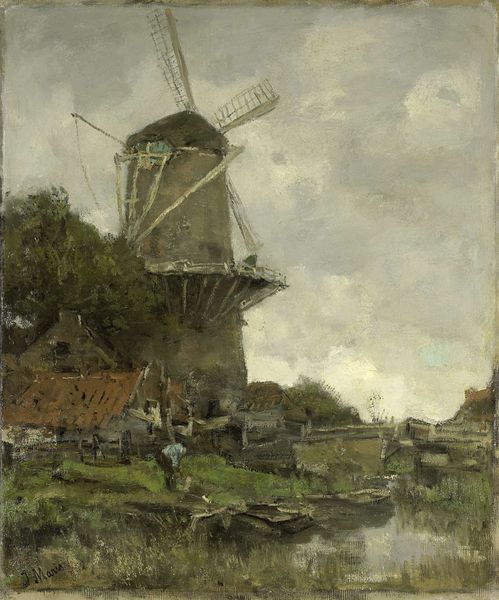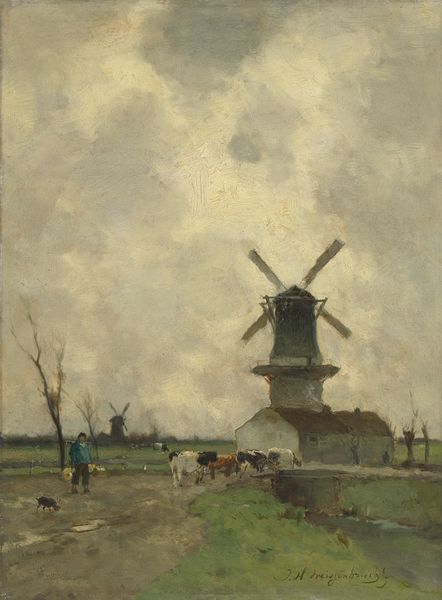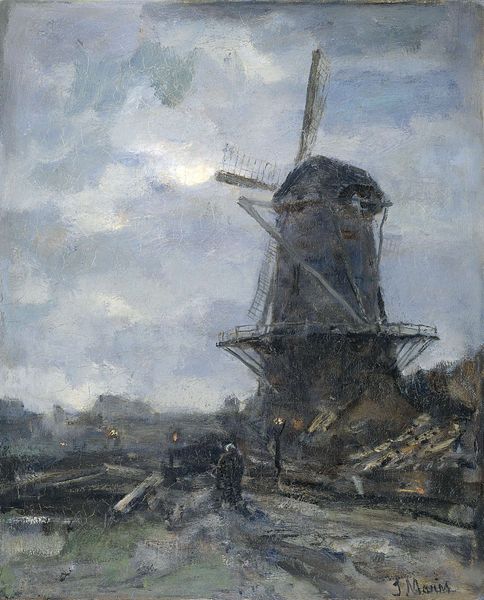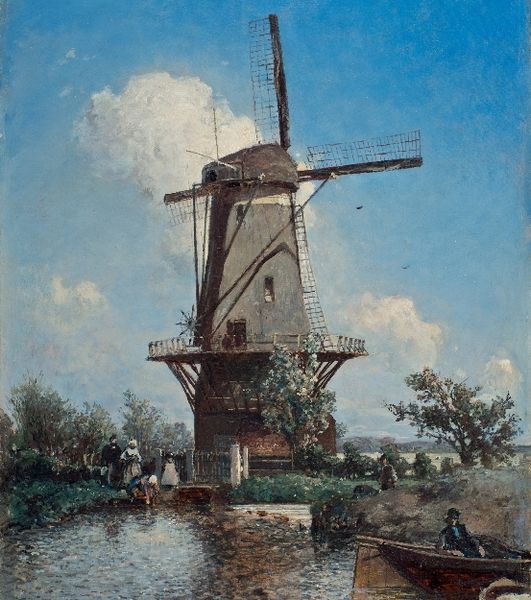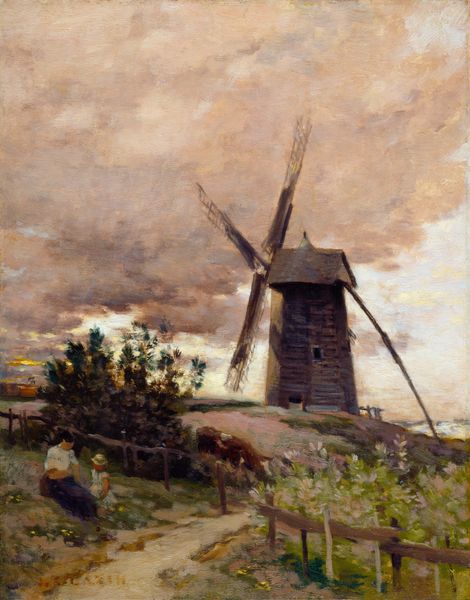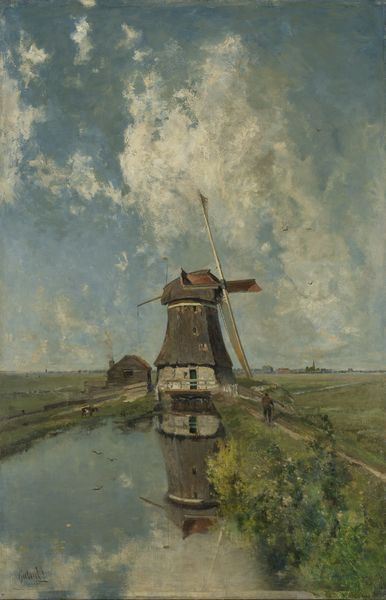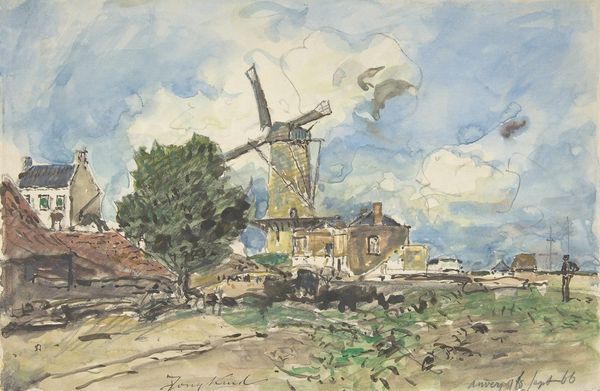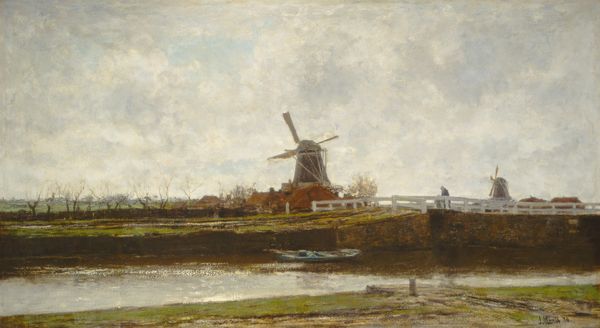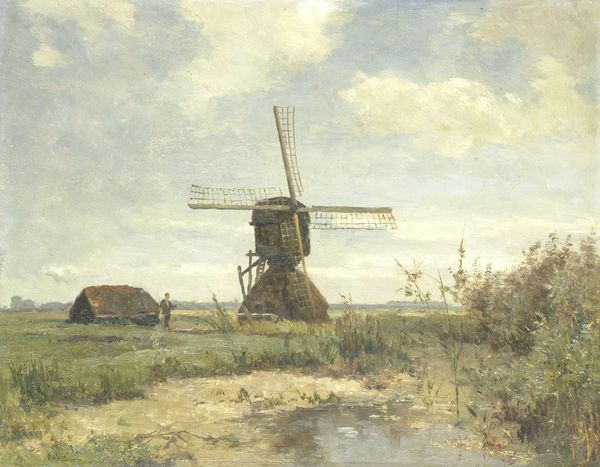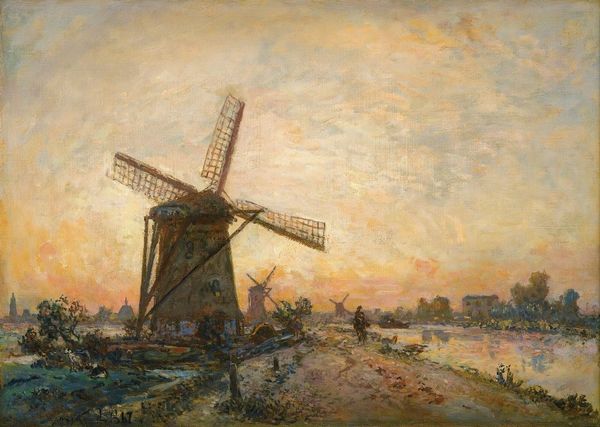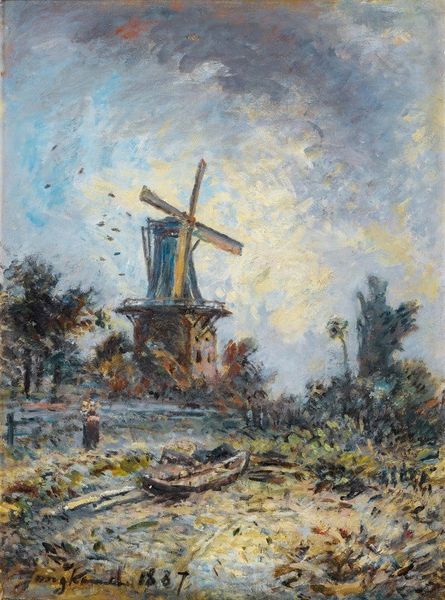
plein-air, oil-paint
#
impressionism
#
plein-air
#
oil-paint
#
landscape
#
impressionist landscape
#
oil painting
#
painterly
#
post-impressionism
Copyright: Public Domain: Artvee
Curator: Immediately, it evokes such a simple, unassuming moment, doesn't it? Those windmills, solid but almost disappearing into the sky. There's a quiet beauty in that ordinary scene. Editor: This is Van Gogh's "Windmills on Montmartre," painted in 1886 while he was living in Paris with his brother Theo. We see the artist engaging with the urban landscape, but from a very specific vantage point. Curator: Paris, through a Dutch lens! I see those muted tones, very different from the bright splashes we usually associate with his later work. A subtle dance of grays and greens… It almost feels like he's holding back, observing. Editor: Absolutely. This was a crucial period for him. Montmartre, then still on the periphery of Paris, represented a site of transition—the remnants of rural life meeting the burgeoning modern city. The windmills themselves become symbols of that transformation, these pre-industrial technologies. Curator: There's something about that almost mournful sky too, the way it presses down on the windmills. Was he perhaps feeling a sense of displacement, observing this disappearing world? I find such quiet sadness. Editor: That sense of melancholy speaks to the broader shifts occurring in Parisian society at the time. These windmills weren't just quaint relics; they powered industries, employed people. Their decline signified a profound socioeconomic change. We could consider who benefits and who is hurt when windmills disappear in favor of new industry? Curator: True. Looking closer, those brushstrokes, thick even then, are like whispers of what was to come. It is as though they're a secret he couldn’t quite contain! A suppressed intensity before the storm! Editor: And in those nascent brushstrokes we find an expression of this liminality that resonates far beyond the immediate representation. The canvas invites reflection on not just Paris’s transformation, but society's unrelenting push toward so-called progress. Curator: Progress at what price? It’s easy to forget the cost, and Van Gogh's honesty helps one not do so. That’s probably the true value of pieces like this, perhaps. Editor: Indeed. In "Windmills on Montmartre" we gain insights into that very delicate balance, making the invisible visible.
Comments
No comments
Be the first to comment and join the conversation on the ultimate creative platform.
